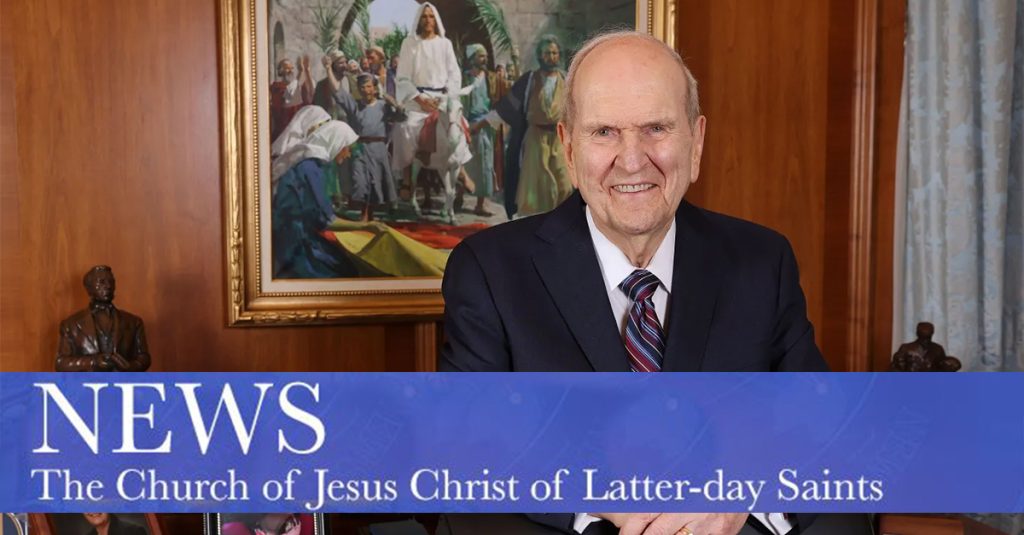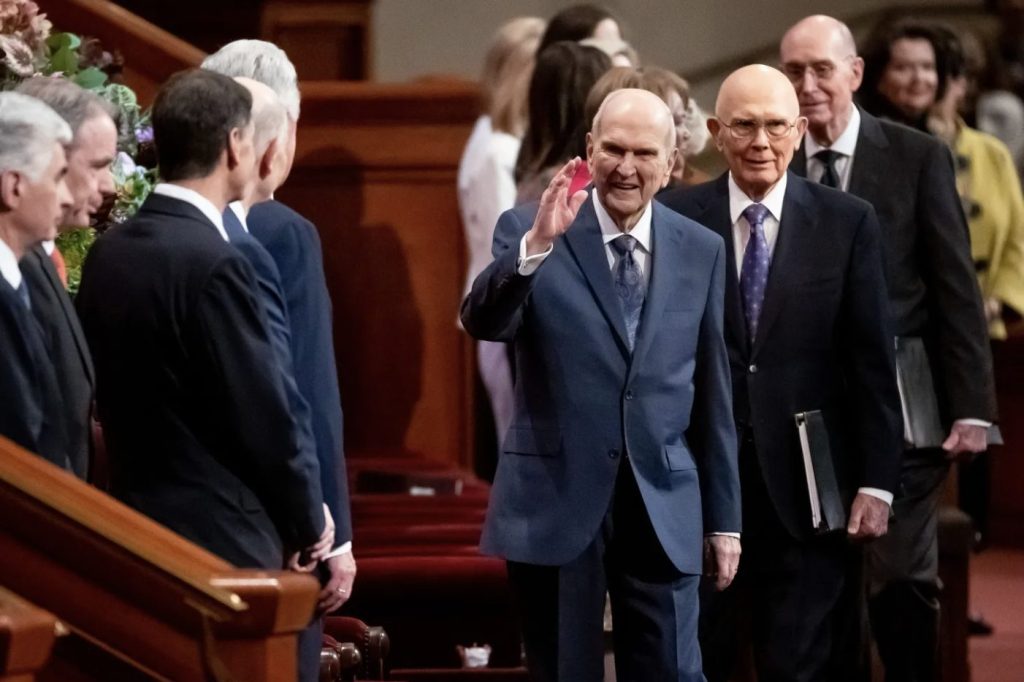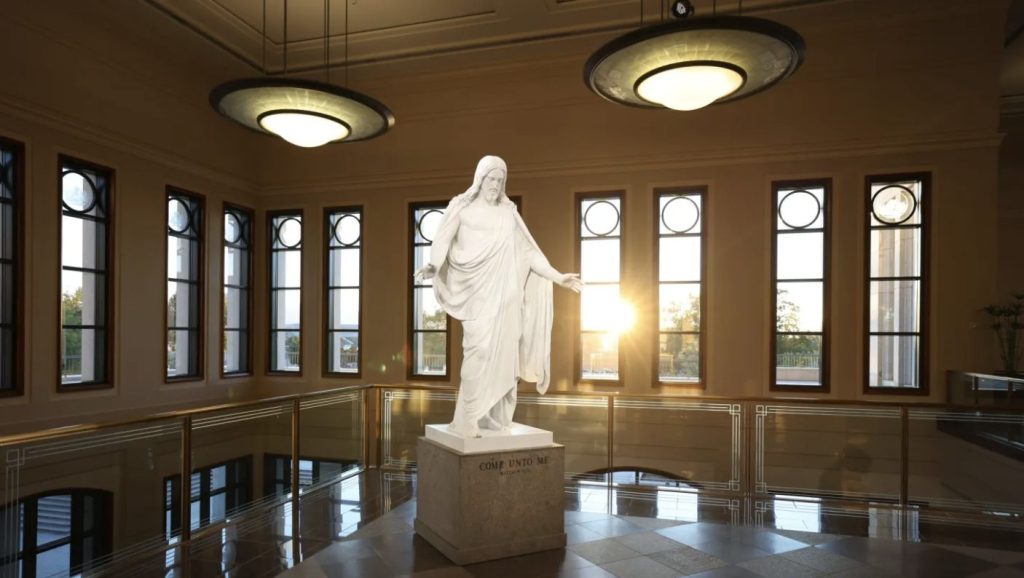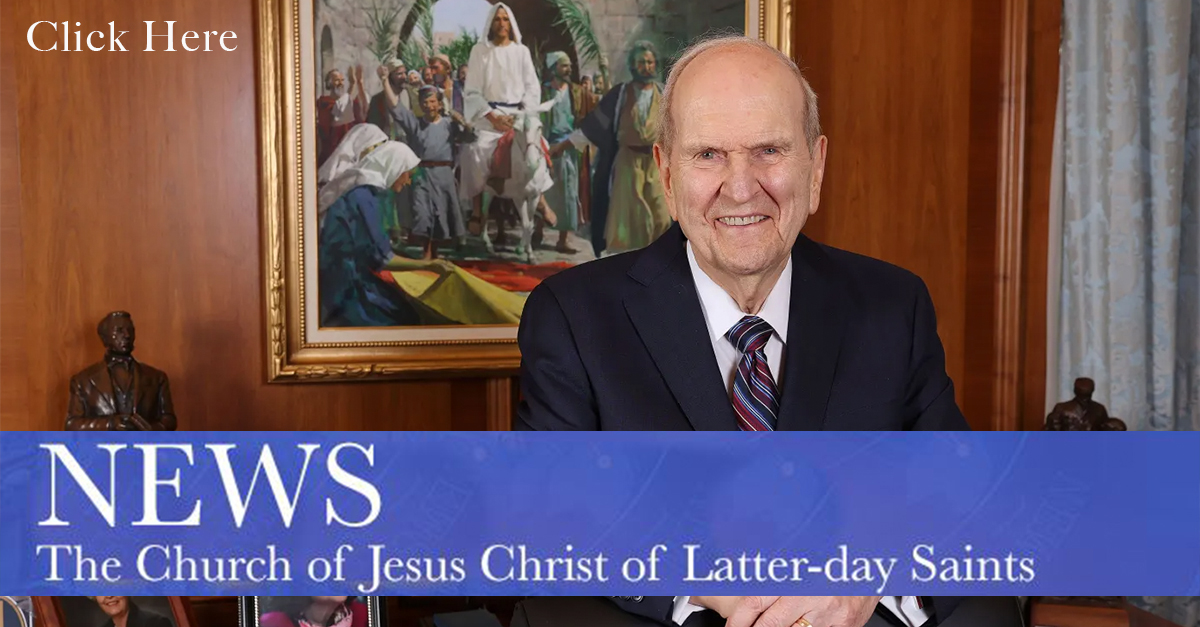President Nelson’s article ‘The Everlasting Covenant’ is in the October 2022 Liahona magazine
By Christine Rappleye 21 Sept 2022, 1:38 PM CDT

Jeffrey D. Allred, Deseret News
When a person makes a covenant with God, their relationship with Him changes and they “leave neutral ground forever.”
“All those who have made a covenant with God have access to a special kind of love and mercy. In the Hebrew language, that covenantal love is called hesed (חֶסֶד),” writes President Russell M. Nelson, President of The Church of Jesus Christ of Latter-day Saints, in an article titled “The Everlasting Covenant” published in the October 2022 Liahona magazine and online at ChurchofJesusChrist.org. It was also previously shared at a general conference leadership meeting on March 31, 2022.
There isn’t an English equivalent for hesed, and translators of the King James Version of the Bible often used “lovingkindness.” Other translations also use “mercy” and “goodness.”

Hesed describes a covenant relationship where both parties are loyal and faithful to each other.
“Once you and I have made a covenant with God, our relationship with Him becomes much closer than before our covenant. Now we are bound together,” President Nelson said. “Because of our covenant with God, He will never tire in His efforts to help us, and we will never exhaust His merciful patience with us. Each of us has a special place in God’s heart. He has high hopes for us.”

Spenser Heaps, Deseret News
The everlasting covenant
“The new and everlasting covenant” (see Doctrine and Covenants 132:6) and the Abrahamic covenant are essentially the same — two ways of phrasing the covenant God made with mortal men and women at different times.
“The adjective everlasting denotes that this covenant existed even before the foundation of the world,” President Nelson said.
The plan that was laid out in the council of heaven included being separated from God’s presence, and God promised He would provide a Savior who would overcome the consequences of the Fall. When Adam and Eve accepted the ordinance of baptism, they began the process of being one with God. “They had entered the covenant path,” President Nelson wrote.
“When you and I also enter that path, we have a new way of life. We thereby create a relationship with God that allows Him to bless and change us. The covenant path leads us back to Him,” President Nelson wrote. “If we let God prevail in our lives, that covenant will lead us closer and closer to Him. All covenants are intended to be binding. They create a relationship with everlasting ties.”
In a revelation to Joseph Smith, the Lord said, “This promise is yours also, because ye are of Abraham, and the promise was made unto Abraham” (Doctrine and Covenants 132:31).
“Thereby, this everlasting covenant was restored as part of the great Restoration of the gospel in its fulness,” President Nelson said.
At baptism, a person enters the covenant path, and then “we enter it more completely in the temple. The blessings of the Abrahamic covenant are conferred in holy temples,” President Nelson said.

The Church of Jesus Christ of Latter-day Saints
Jesus Christ at the center of the covenant
“The fulfillment of the Abrahamic covenant becomes feasible because of the Atonement of our Savior, the Lord Jesus Christ. Jesus Christ is at the center of the Abrahamic covenant,” President Nelson said.
The Old Testament shares the history of the covenant with Abraham and how it was carried through his and Sarah’s son Isaac and then through Isaac and Rachel’s son Jacob.
Jacob’s name was changed to Israel (see Genesis 32:28), meaning “let God prevail” or “one who prevails with God.”
“All who accept the gospel become part of the lineage of Abraham,” President Nelson said, citing Galatians 3:27–29. “Thus, we can become heirs to the covenant either by birth or by adoption.”
The importance of the covenant is mentioned several times in the scriptures, including in Deuteronomy and by the apostles in the New Testament. The resurrected Jesus Christ, when He visited the people of ancient America said: “Ye are the children of the prophets; and ye are of the house of Israel; and ye are of the covenant which the Father made with your fathers, saying unto Abraham: And in thy seed shall all the kindreds of the earth be blessed.
“The Father having raised me up unto you first, and sent me to bless you in turning away every one of you from [your] iniquities; and this because ye are the children of the covenant” (3 Nephi 20:25–26).
President Nelson said: “Those who keep their covenants with God will become a strain of sin-resistant souls! Those who keep their covenants will have the strength to resist the constant influence of the world.”


